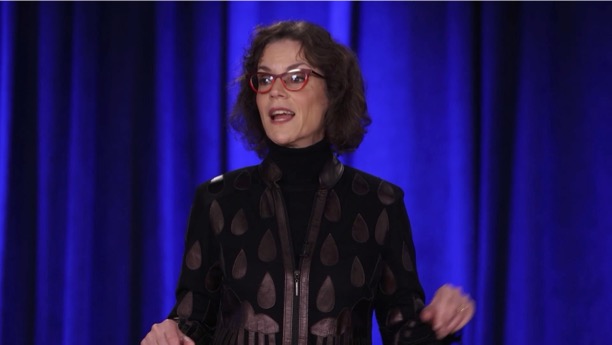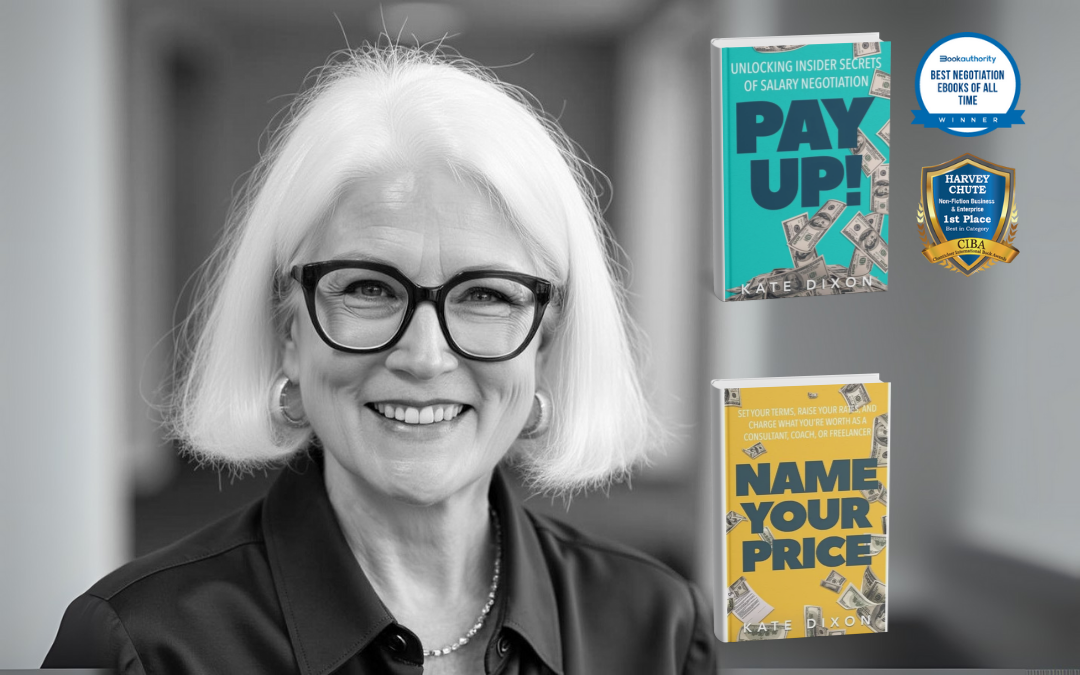
by Robyn Bolton | Dec 10, 2025 | Customer Centricity, Innovation, Leading Through Uncertainty
In times of great uncertainty, we seek safety. But what does “safety” look like?
What we say: Safety = Data
We tend to believe that we are rational beings and, as a result, we rely on data to make decisions.
Great! We’ve got lots of data from lots of uncertain periods. HBR examined 4,700 public companies during three global recessions (1980, 1990, and 2000). They found that the companies that the companies that emerged “outperforming rivals in their industry by at least 10% in terms of sales and profits growth” had one thing in common: They aggressively made cuts to improve operational efficiency and ruthlessly invested in marketing, R&D, and building new assets to better serve customers have the highest probability of emerging as markets leaders post-recession.
This research was backed up in 2020 in a McKinsey study that found that “Organizations that maintained their innovation focus through the 2009 financial crisis, for example, emerged stronger, outperforming the market average by more than 30 percent and continuing to deliver accelerated growth over the subsequent three to five years.”
What we do: Safety = Hoarding
The reality is that we are human beings and, as a result, make decisions based on how we feel and the use data to justify those decisions.
How else do you explain that despite the data, only 9% of companies took the balanced approach recommended in the HBR study and, ten years later, only 25% of the companies studied by McKinsey stated that “capturing new growth” was a top priority coming out of the COVID-19 pandemic.
Uncertainty is scary so, as individuals and as organizations, we scramble to secure scarce resources, cut anything that feels extraneous, and shift or focus to survival.
What now? And, not Or.
What was true in 2010 is still true today and new research from Bain offers practical advice for how leaders can follow both their hearts and their heads.
Implement systems to protect you from yourself. Bain studied Fast Company’s 50 Most Innovative Companies and found that 79% use two different operating models for innovation to combat executives’ natural risk aversion. The first, for sustaining innovation uses traditional stage-gate models, seeks input from experts and existing customers, and is evaluated on ROI-driven metrics.
The second, for breakthrough innovations, is designed to embrace and manage uncertainty by learning from new customers and emerging trends, working with speed and agility, engaging non-traditional collaborators, and evaluating projects based on their long-term potential and strategic option value.
Don’t outspend. Out-allocate. Supporting the two-system approach, nearly half of the companies studied send less on R&D than their peers overall and spend it differently: 39% of their R&D budgets to sustaining innovations and 61% to expanding into new categories or business models.
Use AI to accelerate, not create. Companies integrating AI into innovation processes have seen design-to-launch timelines shrink by 20% or more. The key word there is “integrate,” not outsource. They use AI for data and trend analysis, rapid prototyping, and automating repetitive tasks. But they still rely on humans for original thinking, intuition-based decisions, and genuine customer empathy.
Prioritize humans above all else. Even though all the information in the world is at our fingerprints, humans remain unknowable, unpredictable, and wonderfully weird. That’s why successful companies use AI to enhance, not replace, direct engagement with customers. They use synthetic personas as a rehearsal space for brainstorming, designing research, and concept testing. But they also know there is no replacement (yet) for human-to-human interaction, especially when creating new offerings and business models.
In times of great uncertainty, we seek safety. But safety doesn’t guarantee certainty. Nothing does. So, the safest thing we can do is learn from the past, prepare (not plan) for the future, make the best decisions possible based on what we know and feel today, and stay open to changing them tomorrow.

by Robyn Bolton | Nov 19, 2025 | Innovation, Stories & Examples
I can’t believe that I’m writing this. Honestly, I can’t believe I’m even thinking this. I’m an open-minded person, but I truly never thought that anything would ever change my mind on this topic. And yet, I must confess that I’ve come to the conclusion that…
(deep breath)
Innovation Theater is important.
(Sorry, needed a minute to recover. It’s one thing to think something. It’s another to see it in writing.)
Why We All Hate(d) Innovation Theater.
The term “Innovation Theater” was coined by Steve Blank in a 2019 HBR article to describe innovation activities like hackathons, shark tanks, and workshops that “shape and build culture, but they don’t win wars, and they rarely deliver shippable/deployable product.”
The name stuck because it gave the Innovation Industrial Complex a perfect scapegoat. Innovation efforts weren’t producing results because companies were turning real strategy into theater—events that could be delegated and scheduled instead of the courage, commitment, and willingness to change that actual innovation requires.
And in many cases, this criticism was warranted.
But in our rush to dismiss Innovation Theater, we missed something important.
What I (Almost) Missed.
Recently, I visited a company’s Innovation Center, curious to see what ten years of innovation investments and two floors in a downtown high-rise had produced.
The answer was a framework to think more deeply about equity and inclusion. My immediate reaction was rage. A decade of investments for this? Millions of dollars spent on the very definition of Innovation Theater? And they’re bragging about it?!?
Once the rage subsided, something remained. Something that I couldn’t shake. An inkling that I had missed something. That inkling became the realization that I was wrong.
Over the past five years, the framework had been used in carefully curated workshops to help teams across the organization see things they had previously overlooked, understand topics that were sensitive or taboo, and envision solutions that no one their heavily regulated industry had even considered.
Not every workshop resulted in action. But over time, something shifted.
Seasons. Not Shows.
Repetition created a shared language. Multiple touchpoints built permission. Small success stories accumulated to make risk feel manageable. The workshops didn’t send off isolated sparks of innovation. They built the conditions were acting on new ideas became progressively safer and more normal.
And after several seasons, enduring value was created. The company now enjoys the highest retention rate of customers in its industry and has attracted more new customers than all its competitors combined. A decade of “Innovation Theater” delivered exactly what innovation is supposed to deliver: measurable competitive advantage and revenue growth.
Don’t Cancel Your Next Innovation Event.
The problem isn’t Innovation Theater itself. It’s how we practice it.
A one-off hackathon? Theater. An annual workshop? Theater. But sustained investment over years, touching dozens of teams, building shared language and accumulated proof points? That’s a strategic bet on transformation that creates lasting competitive advantage.
The question isn’t whether Innovation Theater works. It’s whether you’re willing to commit to the season, not just the show. Are you prepared to invest consistently, measure differently, and wait for compounding effects that won’t show up in next quarter’s results?
Because when you commit to the season, not just the show, it’s the most strategic bet you can make.

by Robyn Bolton | Nov 1, 2025 | Innovation, Leading Through Uncertainty
“Is this what the dinosaurs did before the asteroid hit?”
That was the first question I was asked at IMPACT, InnoLead’s annual gathering of innovation practitioners, experts, and service providers.
It was also the first of many that provided insight into what’s on innovators and executives’ minds as we prepare for 2026
How can you prevent failure from being weaponized?
This is both a direct quote and a distressing insight into the state of corporate life. The era of “fail fast” is long gone and we’re even nostalgic for the days when we simply feared failure. Now, failure is now a weapon to be used against colleagues.
The answer is neither simple nor quick because it comes down to leadership and culture. Jit Kee Chin, Chief Technology Officer at Suffolk Construction, explained that Suffolk is able to stop the weaponization of failure because its Chairman goes to great lengths to role model a “no fault” culture within the company. “We always ask questions and have conversations before deciding on, judging, or acting on something,” she explained
How do you work with the Core Business to get things launched?
It’s long been innovation gospel that teams focused on anything other than incremental innovation must be separated, managerially and physically, from the core business to avoid being “infected” by the core’s unquestioning adherence to the status quo.
The reality, however, is the creation of Innovation Island, where ideas are created, incubated, and de-risked but remain stuck because they need to be accepted and adopted by the core business to scale.
The answer is as simple as it is effective: get input and feedback during concept development, find a core home and champion as your prototype, and work alongside them as you test and prepare to launch.
How do you organize for innovation?
For most companies, the residents of Innovation Island are a small group of functionally aligned people expected to usher innovations from their earliest stages all the way to launch and revenue-generation.
It may be time to rethink that.
Helen Riley, COO/CFO of Google X, shared that projects start with just one person working part-time until a prototype produces real-world learning. Tom Donaldson, Senior Vice President at the LEGO Group, explained that rather than one team with a large mandate, LEGO uses teams specially created for the type and phase of innovation being worked on.
What are you doing about sustainability?
Honestly, I was surprised by how frequently this question was asked. It could be because companies are combining innovation, sustainability, and other “non-essential” teams under a single umbrella to cut costs while continuing the work. Or it could be because sustainability has become a mandate for innovation teams.
I’m not sure of the reason and the answer is equally murky. While LEGO has been transparent about its sustainability goals and efforts, other speakers were more coy in their responses, for example citing the percentage of returned items that they refurbish or recycle but failing to mention the percentage of all products returned (i.e. 80% of a small number is still a small number).
How can humans thrive in an AI world?
“We’ll double down,” was Rana el Kaliouby’s answer. The co-founder and managing partner of Blue Tulip Ventures and host of Pioneers of AI podcast, showed no hesitation in her belief that humans will continue to thrive in the age of AI.
Citing her experience listening to Radiotopia Presents: Bot Love, she encouraged companies to set guardrails for how, when, and how long different AI services can be used. She also advocated for the need for companies to set metrics that go beyond measuring and maximizing usage time and engagement to considering the impact and value created by their AI-offerings.
What questions do you have?

by Robyn Bolton | Oct 13, 2025 | Innovation, Leading Through Uncertainty
As a kid, you’re taught that when you’re lost, stay put and wait for rescue. Most executives are following that advice right now—sitting tight amid uncertainty, hoping someone saves them from having to make hard choices and take innovation risk.
This year’s Nobel Prize winners in Economics have bad news: there is no rescue coming. Joel Mokyr, Philippe Aghion, and Peter Howitt demonstrated that disruption happens whether you participate or not. Freezing innovation investments doesn’t reduce innovation risk. It guarantees competitors destroy you while you stand still.
They also have good news: innovation follows predictable patterns based on competitive dynamics, offering a framework for making smarter investment decisions.
How We Turned Stagnation into a System for Growth
For 99.9% of human history, economic growth was essentially zero. There were occasional bursts of innovation, like the printing press, windmills, and mechanical clocks, but growth always stopped.
200 years ago, that changed. Mokyr identified that the Industrial Revolution created systems connecting two types of knowledge: Propositional knowledge (understanding why things work) and Prescriptive knowledge (practical instructions for how to execute).
Before the Industrial Revolution, these existed separately. Philosophers theorized. Artisans tinkered. Neither could build on the other’s work. But the Enlightenment created feedback loops between theory and practice allowing countries like Britain to thrive because they had people who could translate theory into commercial products.
Innovation became a system, not an accident.
Why We Need Creative Destruction
Every year in the US, 10% of companies go out of business and nearly as many are created. This phenomenon of creative destruction, where companies and jobs constantly disappear and are replaced, was identified in 1942. Fifty years later, Aghion and Howitt built a mathematical model proving its required for growth.
Their research also lays bare some hard truths:
- Creative destruction is constant and unavoidable. Cutting your innovation budget does not pause the game. It forfeits your position. Competitors are investing in R&D right now and their innovations will disrupt yours whether you participate or not.
- Competitive position predicts innovation investments. Neck-to-neck competitors invest heavily in innovation because it’s their only path to the top. Market leaders cut back and coast while laggards don’t have the funds to catch-up. Both under-invest and lose.
- Innovation creates winners and losers. Creative destruction leads to job destruction as work shifts from old products and skills to new ones. You can’t innovate and protect every job but you can (and should) help the people affected.
Ultimately, creative destruction drives sustained growth. It is painful and scary, but without it, economies and society stagnate. Ignore it at your peril. Work with it and prosper.
From Prize-winning to Revenue-generating
Even though you’re not collecting the one million Euro prize, these insights can still boost your bottom line if you:
- Connect your Why teams with your How teams. Too often, Why teams like Strategy, Innovation, and R&D, chuck the ball over the wall to the How teams in Operations, Sales, Supply Chain, and front-line operations. Instead, connect them early and often and ensure the feedback loop that drives growth
- Check your R&D and innovation investments. Are your R&D and innovation investments consistent with your strategic priorities or your competitive position? What are your investments communicating to your competitors? It’s likely that that “conserving cash” is actually coasting and ceding share.
- Invest in your people and be honest with them. Your employees aren’t dumb. They know that new technologies are going to change and eliminate jobs. Pretending that won’t happen destroys trust and creates resistance that kills innovation. Tell employees the truth early, then support them generously through transitions.
What’s Your Choice?
Playing it safe guarantees the historical default: stagnation. The 2025 Nobel Prize winners proved sustained growth requires building innovation systems and embracing creative destruction.
The only question is whether you will participate or stagnate.

by Robyn Bolton | Oct 6, 2025 | 5 Questions, Customer Centricity, Innovation, Tips, Tricks, & Tools
For decades, we’ve faithfully followed innovation’s best practices. The brainstorming workshops, the customer interviews, and the validated frameworks that make innovation feel systematic and professional. Design thinking sessions, check. Lean startup methodology, check. It’s deeply satisfying, like solving a puzzle where all the pieces fit perfectly.
Problem is, we’re solving the wrong puzzle.
As Ellen Di Resta points out in this conversation, all the frameworks we worship, from brainstorming through business model mapping, are business-building tools, not idea creation tools.
Read on to learn why our failure to act on the fundamental distinction between value creation and value capture causes too many disciplined, process-following teams to create beautiful prototypes for products nobody wants.
Robyn: What’s the one piece of conventional wisdom about innovation that organizations need to unlearn?
Ellen: That the innovation best practices everyone’s obsessed with work for the early stages of innovation.
The early part of the innovation process is all about creating value for the customer. What are their needs? Why are their Jobs to be Done unsatisfied? But very quickly we shift to coming up with an idea, prototyping it, and creating a business plan. We shift to creating value for the business, before we assess whether or not we’ve successfully created value for the customer.
Think about all those innovation best practices. We’ve got business model canvas. That’s about how you create value for the business. Right? We’ve got the incubators, accelerators, lean, lean startup. It’s about creating the startup, which is a business, right? These tools are about creating value for the business, not the customer.
R: You know that Jobs to be Done is a hill I will die on, so I am firmly in the camp that if it doesn’t create value for the customer, it can’t create value for the business. So why do people rush through the process of creating ideas that create customer value?
E: We don’t really teach people how to develop ideas because our culture only values what’s tangible. But an idea is not a tangible thing so it’s hard for people to get their minds around it. What does it mean to work on it? What does it mean to develop it? We need to learn what motivates people’s decision-making.
Prototypes and solutions are much easier to sell to people because you have something tangible that you can show to them, explain, and answer questions about. Then they either say yes or no, and you immediately know if you succeeded or failed.
R: Sounds like it all comes down to how quickly and accurately can I measure outcomes?
E: Exactly. But here’s the rub, they don’t even know they’re rushing because traditional innovation tools give them a sense of progress, even if the progress is wrong.
We’ve all been to a brainstorm session, right? Somebody calls the brainstorm session. Everybody goes. They say any idea is good. Nothing is bad. Come up with wild, crazy ideas. They plaster the walls with 300 ideas, and then everybody leaves, and they feel good and happy and creative, and the poor person who called the brainstorm is stuck.
Now what do they do? They look at these 300 ideas, and they sort them based on things they can measure like how long it’ll take to do or how much money it’ll cost to do it. What happens? They end up choosing the things that we already know how to do! So why have the brainstorm?”
R: This creates a real tension: leadership wants progress they can track, but the early work is inherently unmeasurable. How do you navigate that organizational reality?
E: Those tangible metrics are all about reliability. They make sure you’re doing things right. That you’re doing it the same way every time? And that’s appropriate when you know what you’re doing, know you’re creating value for the customer, and now you’re working to create value for the business. Usually at scale
But the other side of it? That’s where you’re creating new value and you are trying to figure things out. You need validity metrics. Are we doing the right things? How will we know that we’re doing the right things.
R: What’s the most important insight leaders need to understand about early-stage innovation?
E: The one thing that the leader must do is run cover. Their job is to protect the team who’s doing the actual idea development work because that work is fuzzy and doesn’t look like it’s getting anywhere until Ta-Da, it’s done!
They need to strategically communicate and make sure that the leadership hears what they need to hear, so that they know everything is in control, right? And so they’re running cover is the best way to describe it. And if you don’t have that person, it’s really hard to do the idea development work.”
But to do all of that, the leader also must really care about that problem and about understanding the customer.
We must create value for the customer before we can create value for the business. Ellen’s insight that most innovation best practices focus on the latter is devastating. It’s also essential for all the leaders and teams who need results from their innovation investments.
Before your next innovation project touches a single framework, ask yourself Ellen’s fundamental question: “Are we at a stage where we’re creating value for the customer, or the business?” If you can’t answer that clearly, put down the canvas and start having deeper conversations with the people whose problems you think you’re solving.
To learn more about Ellen’s work, check out Pearl Partners.
To dive deeper into Ellen’s though leadership, visit her Substack – Idea Builders Guild.
To break the cycle of using the wrong idea tools, sign-up for her free one-hour workshop.

by Robyn Bolton | Sep 23, 2025 | Innovation, Metrics, Tips, Tricks, & Tools
It’s time for your company’s All-Hands meeting. Your CEO stands on stage and announces ambitious innovation goals, talking passionately about the importance of long-term thinking and breakthrough results. Everyone nods enthusiastically, applauds politely, and returns to their desks to focus on hitting this quarter’s numbers. After all, that’s what their bonuses depend on.
Kate Dixon, compensation expert and founder of Dixon Consulting, has watched this contradiction play out across Fortune 500 companies, B Corps, and startups. Her insight cuts to the heart of why so many innovation initiatives fail: we’re asking people to think long-term while paying them to deliver short-term.
In our conversation, Kate revealed why most companies are inadvertently sabotaging their own innovation efforts through their compensation structures—and what the smartest organizations are doing differently.
Robyn Bolton: Kate, when I first heard you say, “compensation is the expression of a company’s culture,” it blew my mind. What do you mean by that?
Kate Dixon: If you want to understand what an organization values, look at how they pay their people: Who gets paid more? Who gets paid less? Who gets bigger bonuses? Who moves up in the organization and who doesn’t? Who gets long-term incentives?
The answers to these questions, and a million others, express the culture of the organization. How we reward people’s performance, either directly or indirectly, establishes and reinforces cultural norms. Compensation is usually the biggest, if not the biggest, expenses that a company has so they’re very thoughtful and deliberate about how it is used. Which is why it tells you what the company actually does value.
RB: What’s the biggest mistake companies make when trying to incentivize innovation?
KD: Let’s start by what companies are good at when it comes to compensations and incentives. They’re really good about base pay, because that’s the biggest part of pay for most people in an organization. Then they spend the next amount of time and effort trying to figure out the annual bonus structure. After that comes other benefits, like long term incentives, assuming they don’t fall by the wayside.
As you know, innovation can take a long time to payout, so long-term incentives are key to encouraging that kind of investment. Stock options and restricted shares are probably the most common long-term incentives but cash bonuses, phantom stock, and ESOP shares in employee-owned companies are also considered long term incentives.
Large companies are pretty good using some equity as an incentive, but they tie it t long term revenue goals, not innovation. As you often remind us, “innovation is a means to the end, which is growth,” so tying incentives to growth isn’t bad but I believe that we can do better. Tying incentives to the growth goals and how they’re achieved will go a long way towards driving innovation.
RB: I’ve worked in and with big companies and I’ve noticed that while they say, “innovation is everyone’s job,” the people who get long-term incentives are typically senior execs. What gives?
Long-term incentives are definitely underutilized, below the executive level, and maybe below the director level. Assuming that most companies’ innovation efforts aren’t moonshots that take decades to realize, it makes a ton of sense to use long-term incentives throughout the organization and its ecosystem. However, when this idea is proposed, people often pushback because “it’s too complex” for folks lower in the organization, “they wouldn’t understand.” or “they won’t appreciate it”. That stance is both arrogant and untrue. I’ve consistently seen that when you explain long-term incentives to people, they do get it, it does motivate them, and the company does see results.
RB: Are there any examples of organizations that are getting this right?
We’re seeing a lot more innovative and interesting risk-taking behaviors in companies that are not primarily focused on profit.
Our B Corp clients are doing some crazy, cool stuff. We have an employee-owned company that is a consulting firm, but they had an idea for a software product. They launched it and now it’s becoming a bigger and bigger part of their business.
Family-owned or public companies that have a single giganto shareholder are also hotbeds of long-term thinking and, therefore, innovation. They don’t have that same quarter to quarter pressure that drives a relentless focus on what’s happening right now and allows people to focus on the future.
What’s the most important thing leaders need to understand about compensation and innovation?
If you’re serious about innovation, you should be incentivizing people all over the organization. If you want innovation to be a more regular piece of the culture so you get better results, you’ve got to look at long term incentives. Yes, you should reward people for revenue and short-term goals. But you also need to consider what else is a precursor to our innovation. What else is makes the conditions for innovating better for people, and reward that, too.
Kate’s insight reveals the fundamental contradiction at the heart of most companies’ innovation struggles: you can’t build long-term value with short-term thinking, especially when your compensation system rewards only the latter.
What does your company’s approach to compensation say about its culture and values?





